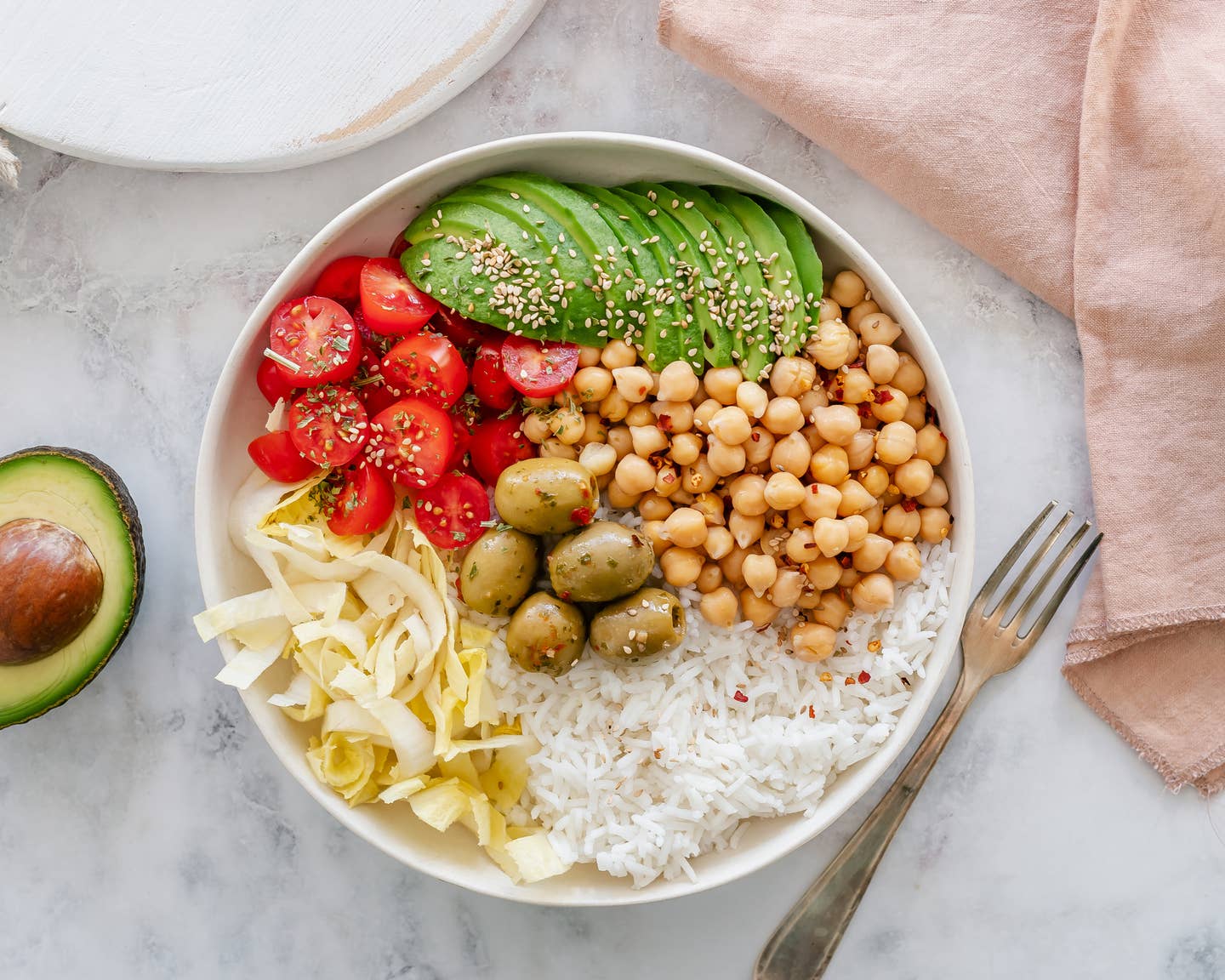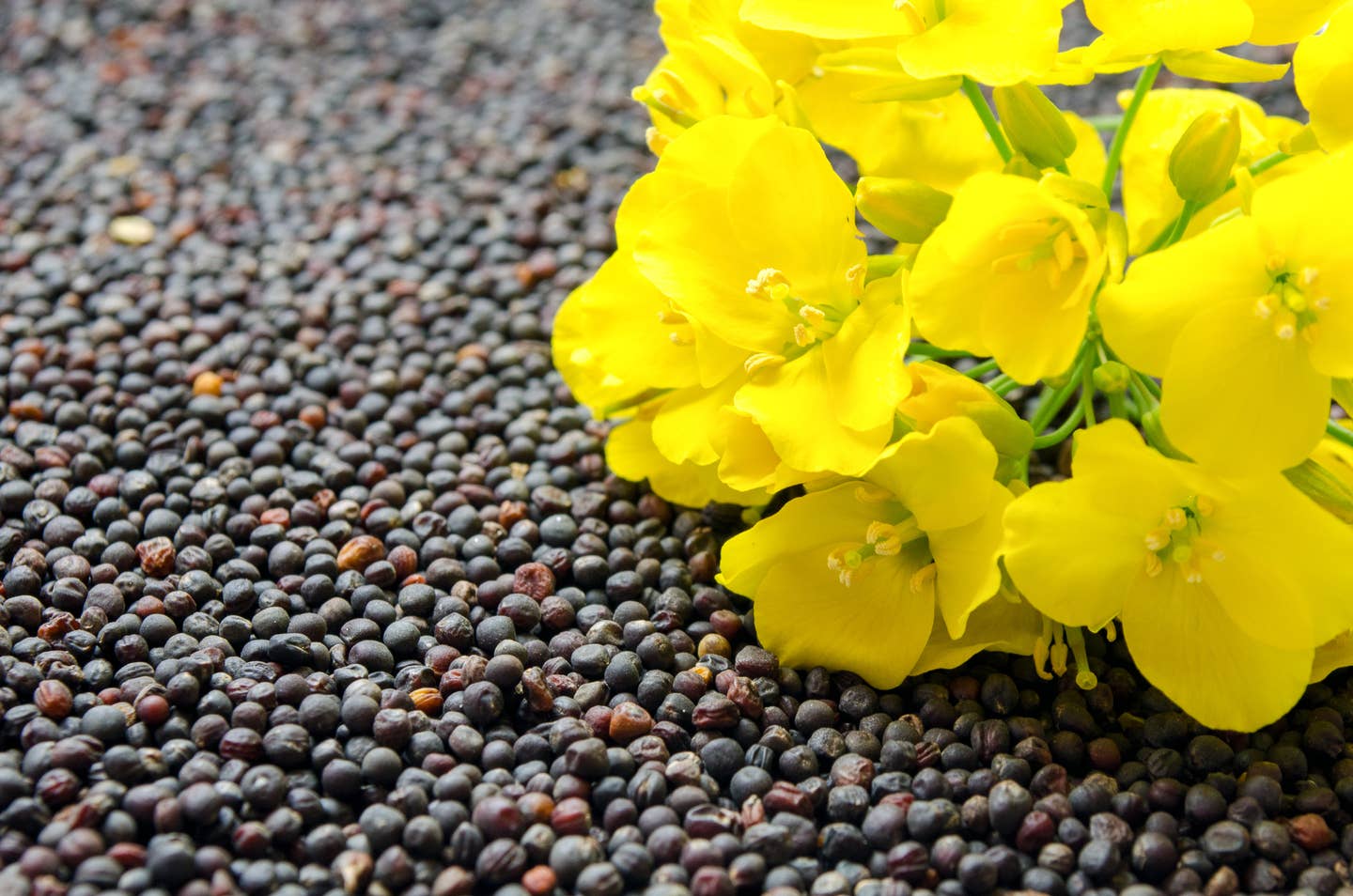
Could Microalgae Be the Palm Oil Substitute We’ve Been Looking For?
Palm oil is one of the world's most common ingredients since it's cheap, easy to grow, and versatile. But the versatility of this ingredient comes at a steep price. Palm oil production is responsible for a devastating impact on the environment, including deforestation, excessive water usage, and direct threats to endangered species across South America and Asia. Plus, high in saturated fat, palm oil is terrible for your heart health. But researchers may have found a viable substitute: microalgae.
A team of researchers at Nanyang Technological University (NTU) in Singapore published a study in the Journal of Applied Phycology that claims that oil from microalgae could work as a healthier, more sustainable substitute for palm oil. The team proposed that microalgae –created by photosynthesizing microorganisms that live in salt or freshwater – would greatly minimize the environmental damages by replacing dependence on palm oil.
Despite calls for a boycott, palm oil is still the most common oil vegetable oil used on the planet. In 2020 alone, over 73 million tons of palm oil were consumed globally. That's because it's cheaper than most other foods to grow: The plant that makes it, the African oil palm, can produce up to 10 times more oil per hectare than soybeans
Health benefits of microalgae
The researchers also found that microalgae would be significantly healthier than palm oil, which has 7 grams of saturated fat per tablespoon, or about the same amount as butter. Saturated fat has been linked to heart disease, a higher risk of strokes, and other chronic diseases, including inflammation and type 2 diabetes. The only oil that is worse is coconut oil which has 12 grams of saturated fat per tablespoon. Healthier oils include olive (with just 1.9 grams of saturated fat per tablespoon) and avocado which has 1.6 grams per tablespoon).
The microalgae contain more polyunsaturated fatty acids which are known to reduce cholesterol levels. Algae oil has a higher level of monounsaturated fats than most other cooking oils (these are the good kinds of fats that are heat stable.) Just one tablespoon of algae oil gives you roughly 13 grams of monounsaturated fat, which is equal to one avocado.
The microalgae-based oil also contains about 4 grams of saturated fat per tablespoon, or one-third coconut and roughly half what palm oil has. These tropical oils have been linked to higher rates of stroke and heart disease, whereas microalgae-based, with its healthy fat profile, could potentially have the opposite effect.
“Developing these plant-based oils from algae is yet another triumph for NTU Singapore as we look to find successful ways to tackle problems in the agri-food-tech chain, especially those that have an adverse impact on the environment," Director of NTU's Food Science and Technology Program William Chen DSc. said. “Uncovering this as a potential human food source is an opportunity to lessen the impact the food supply chain has on our planet.”
To conduct this experiment, the NTU researchers partnered with another team from the University of Malaya in Malaysia. Together, the coalition developed microalgae oil that could potentially replace palm oil as an ingredient across multiple categories. The researchers proved the oil would be suitable for edible applications, claiming that it could have widespread benefits for the agri-food-tech industry.
Palm oil is an ingredient found in nearly half of all consumer products. Estimates show that farmers produced 77 million tons of palm oil in 2018, and expected the number to rise to 107.6 million tonnes by 2024. While efforts to boycott palm oil have surfaced in recent years, many activists are stunted by the firm grasp palm oil has on the market. The NTU researchers aim to find a substitute that is more affordable than the industry could potentially adopt.
“Our solution is a three-pronged approach to solving three pressing issues," Chen said. "We are capitalizing on the concept of establishing a circular economy, finding uses for would-be waste products, and re-injecting them into the food chain. In this case, we rely on one of nature’s key processes, fermentation, to convert that organic matter into nutrient-rich solutions, which could be used to cultivate algae, which not only reduces our reliance on palm oil but keeps carbon out of the atmosphere.”
The researcher's efforts will potentially curb the need for palm oil in products and lessen its impact on climate change. The tests are proving that microalgae are far more sustainable since they can be grown in most underwater environments. The naturally regenerative source would have less impact on the environment compared to palm oil production. Microalgae oil could be an answer to the fight to preserve biodiversity.
For more coverage on the planet and sustainability, visit The Beet's Environmental News articles.
Top 10 Sources of Plant-Based Protein According to a Nutritionist
1. Seitan
Protein: 21 grams in ⅓ cup (1 ounce) Seitan isn’t as popular as other proteins, but it should be! Made from wheat gluten, its texture resembles ground meat. It’s often used in pre-made veggie burgers or meatless nuggets. Seitan has a savory taste, like mushrooms or chicken, so it works well in dishes that call for an umami flavor. With a hearty texture, seitan can be the star of practically any vegan main dish. Add it to stir-fries, sandwiches, burritos, burgers, or stews. Like tofu, seitan will take on the flavor of any marinade or sauce.
2. Tempeh
Protein: 16 grams in 3 ounces If you like a protein with a bit of bite, add tempeh to your list. Made from fermented soybeans, tempeh has a slightly nutty flavor and is pressed into a block. Most varieties include some sort of grains, such as barley or millet. Not only is tempeh a plant-based source of protein, but the fermentation process also creates good-for-your-gut probiotics. You can cut tempeh right off the block and use it as the base for a sandwich or pan-fry it with some sauce. Or, crumble, heat, and make it the star of your next taco night.
3. Lentils
Protein: 13 grams in ½ cup cooked Lentils come in multiple varieties--red, yellow, green, brown, black. Regardless of the type lentils are small but mighty nutritional powerhouses. They pack a good amount of protein as well as iron, folate, and fiber. When cooked, brown lentils retain their texture and can be the base for a grain bowl or make a hearty substitute for ground meat in meatballs, lasagna, tacos or Bolognese. Red lentils are a bit softer and make a nice add-in for a hearty soup, chili, or stew.
4. Hemp Seeds
Protein: 10 grams in 3 tablespoons Hemp seeds are a tender and nutty seed, derived from the hemp plant. They contain good amounts of omega-3s, iron, folate, magnesium, phosphorus, and manganese. They are also a solid source of both soluble and insoluble fiber, which helps to keep your digestive tract healthy and humming. Because they pack a double whammy of protein and healthy fats, hemp seeds can help satisfy hunger, preventing those embarrassing stomach growls as you slog your way to your lunch break. Add them to your morning smoothie or sprinkle them on top of yogurt, oatmeal, or even a salad.
5. Tofu
Protein: 9 grams in 3 ounces (⅕ of a block) Made from coagulated soybeans, tofu is the most popular plant-based protein. Soy is one of the only meatless "complete" proteins, meaning that it contains all of the essential amino acids that the body can’t make but needs for muscle and immune function. With 15% of your daily calcium needs, tofu is also a good replacement for dairy.
6. Edamame
Protein: 9 grams of protein in ½ cup This sushi appetizer is a nutrient powerhouse, so eat it anytime. Edamame is really just another name for soybeans in their pods. Let’s list off some stats--a small ½-cup serving of edamame has 9 grams of protein, 15% of your daily vitamin C, 10% of your daily iron and 16% of your daily fiber. Keep a bag of edamame in your freezer to serve as a fun-to-eat side dish or opt for the shelled variety to toss into salads or a grain bowl.
7. Quinoa
Protein: 8 grams per cup (cooked) Quinoa is an ancient grain and since it's gluten-free a great choice for anyone avoiding gluten. Add it to your burger recipe to create filling texture, or instead of meat in your taco or burrito. Quinoa is among the healthiest foods on the planet, delivering phytonutrients that have anti-inflammatory qualities, so keep it in your pantry for any meal that needs a filling grain. Just remember to soak it and rinse before cooking to get rid of any bitter taste.
8. Black Beans
Protein: 7 grams in ½ cup (canned) Eating beans on the regular might as well be a prerequisite for a plant-based diet. Not only are canned black beans inexpensive, but they also contribute 10% of your daily iron and 25% of your daily fiber to your diet. For less than $1 a can, beans can be the star of tacos, quesadillas, salads, soups, burgers, or dips.
9. Amaranth
Protein: 6 grams in ⅔ cup (cooked) Chances are you’ve never cooked amaranth. But you should, since this tiny, gluten- free grain is packed with almost 30% of your daily fiber and 20% of your daily iron. Cook it like a traditional grain to yield a soft, porridge-like texture. Many people add amaranth to other a hot breakfast cereal mixture, like oats and quinoa. It also pops like popcorn. Toss it in a pot with some oil and wait for it to pop up into a nutritious snack.
10. Peas
Protein: 5 grams in ⅔ cup If peas were one of your most hated veggies as a kid, it’s time to give them another chance. These green beans are a great low-calorie protein to keep in your freezer. Sure, they don’t always taste great when steamed or microwaved (who wants to eat mushy, overcooked peas?), but they do blend well into a yummy puree that can be slathered on toast. To amp up the flavor, add some lemon juice or mint to your mix before you blend.
More From The Beet






